Jason Davis • November 29, 2019
The Downlink: Europe Funds Planetary Defense Mission and Mars Sample Return
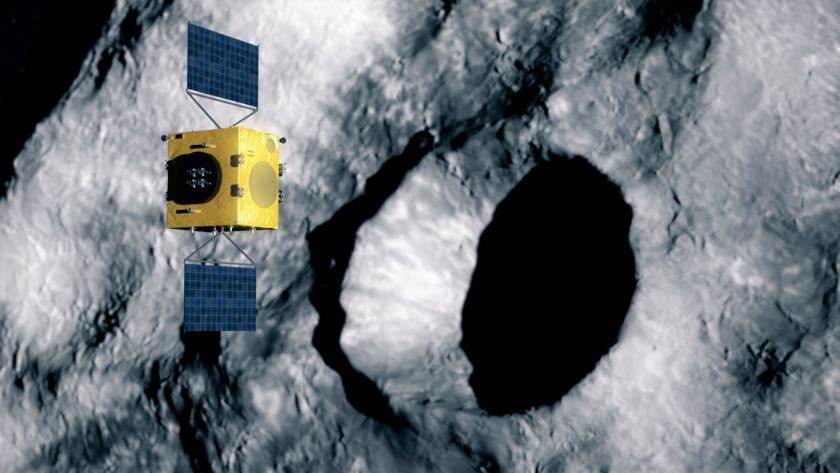
ESA – Science Office
Hera scans DART's impact crater
This artist's rendering shows ESA's Hera spacecraft over the moon of asteroid Didymos, examining the impact crater caused by NASA's DART spacecraft. DART will intentionally crash into Didymos' moon in 2022 to test an asteroid deflection technique.
Welcome to issue 9 of The Downlink, a planetary exploration news roundup from The Planetary Society! Here's everything that crossed our radar this week.
 A new European Space Agency (ESA) budget funds Hera, a planetary defense mission that The Planetary Society supports. Hera would visit asteroid Didymos in 2026 after NASA's DART mission intentionally crashes into the asteroid's small Moon in 2022. This will provide precise measurements of the impact's effect on the moon's orbit, validating one possible technique to deflect an asteroid on target to hit the Earth.
A new European Space Agency (ESA) budget funds Hera, a planetary defense mission that The Planetary Society supports. Hera would visit asteroid Didymos in 2026 after NASA's DART mission intentionally crashes into the asteroid's small Moon in 2022. This will provide precise measurements of the impact's effect on the moon's orbit, validating one possible technique to deflect an asteroid on target to hit the Earth.
 ESA's new budget also funds work that supports another Planetary Society priority: Mars sample return. Under the most recent mission design proposals, ESA would provide a rover to retrieve samples collected by NASA's Mars 2020 rover, as well as an orbiter that would return the samples to Earth.
ESA's new budget also funds work that supports another Planetary Society priority: Mars sample return. Under the most recent mission design proposals, ESA would provide a rover to retrieve samples collected by NASA's Mars 2020 rover, as well as an orbiter that would return the samples to Earth.
 Other highlights from ESA's new budget include funding for two Lunar Gateway components: the ESPRIT refueling and communications module, and a habitation module that would be developed with Japan. ESA is also working on a large robotic lunar lander.
Other highlights from ESA's new budget include funding for two Lunar Gateway components: the ESPRIT refueling and communications module, and a habitation module that would be developed with Japan. ESA is also working on a large robotic lunar lander.
 Eagle-eyed Twitter users have spotted new high-resolution imagery available from China's Chang'e-4 mission to the far side of the Moon. The image library, hosted by the country's space agency, contains the full Chang'e-4 landing video, a video of Yutu-2 roving on the surface, and other goodies. Learn more about the mission here.
Eagle-eyed Twitter users have spotted new high-resolution imagery available from China's Chang'e-4 mission to the far side of the Moon. The image library, hosted by the country's space agency, contains the full Chang'e-4 landing video, a video of Yutu-2 roving on the surface, and other goodies. Learn more about the mission here.
 The Orion capsule NASA will use for the Artemis 1 test flight has shipped from Kennedy Space Center to Plum Brook Station in Ohio for environmental testing. Orion will eventually carry humans to the Moon, but it must first complete a test flight that will likely occur in 2021. Learn more about NASA's back-to-the-Moon Artemis program.
The Orion capsule NASA will use for the Artemis 1 test flight has shipped from Kennedy Space Center to Plum Brook Station in Ohio for environmental testing. Orion will eventually carry humans to the Moon, but it must first complete a test flight that will likely occur in 2021. Learn more about NASA's back-to-the-Moon Artemis program.
 Data collected by Mars orbiters during the planet-wide dust storm that doomed NASA's Opportunity rover last year sheds new light on a phenomenon known as "dust towers." Dust towers are concentrated columns of dust that rise due to heating from sunlight. They carry water vapor high into the atmosphere, where it can be broken apart by the Sun's ultraviolet radiation. Dust towers may have contributed to the loss of Mars' surface water.
Data collected by Mars orbiters during the planet-wide dust storm that doomed NASA's Opportunity rover last year sheds new light on a phenomenon known as "dust towers." Dust towers are concentrated columns of dust that rise due to heating from sunlight. They carry water vapor high into the atmosphere, where it can be broken apart by the Sun's ultraviolet radiation. Dust towers may have contributed to the loss of Mars' surface water.
 A new paper on Ryugu, the asteroid Japan's Hayabusa2 spacecraft recently departed after a year-and-a-half of study, suggests the asteroid's eastern and western hemispheres formed at different periods of time. The implications behind this aren't clear, but scientists will learn more after Hayabusa2 returns to Earth with samples from Ryugu next year. Read more about the science results from Hayabusa2 here.
A new paper on Ryugu, the asteroid Japan's Hayabusa2 spacecraft recently departed after a year-and-a-half of study, suggests the asteroid's eastern and western hemispheres formed at different periods of time. The implications behind this aren't clear, but scientists will learn more after Hayabusa2 returns to Earth with samples from Ryugu next year. Read more about the science results from Hayabusa2 here.
We heard you: Thanks for your feedback requesting an email version of The Downlink! You will find it in our redesigned Planetary Society newsletter in early 2020. Be among the first to receive it by subscribing to our email list today!
Read more: Mars Sample Return, asteroid 162173 Ryugu, Humans in Deep Space, Hayabusa2, Opportunity, DART, Hera, Mars Exploration Rovers, the Moon, Mars, The Downlink, asteroid 65803 Didymos

Let's Change the World
Become a member of The Planetary Society and together we will create the future of space exploration.
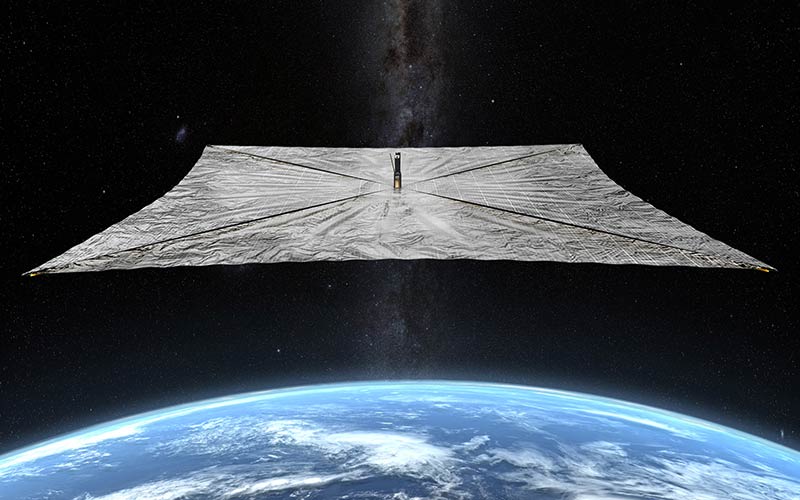
LightSail 2
LightSail 2 launched aboard the SpaceX Falcon Heavy. Be part of this epic point in space exploration history!
from Planetary Society Blog https://ift.tt/2DqdjnE
via IFTTT
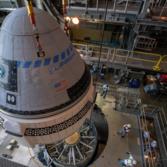
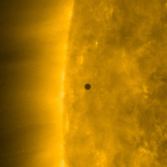
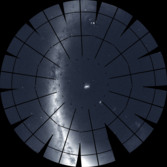
沒有留言:
張貼留言